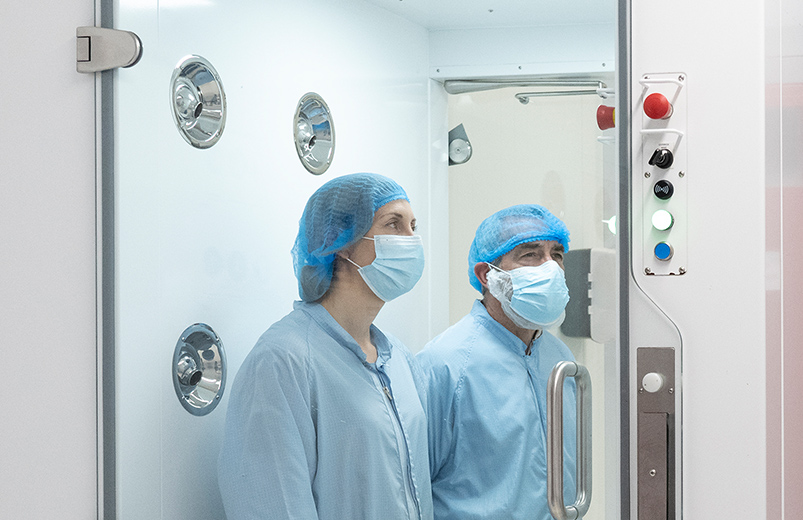The COVID-19 pandemic has driven enormous development in the Cleanroom technology market, which is now expected to reach a value of $8.87 billion by 2026.
Across hospitals, pharmaceutical laboratories, research facilities and more, cleanroom environments are subject to some of the strictest measures and protocols to ensure no contamination takes place.
But what are the most important technologies being used for cleanroom sanitation? Let’s find out.
1. Cleanroom Air Showers
Air showers are self-contained chambers placed in cleanroom space entrances that everyone entering the space must pass through, serving as an integral part of contamination control.
This technology uses high velocity HEPA-filtered air jets to ‘scrub’ entrants and reduce the risk of contaminants entering or exiting the cleanroom.
Subject to strict rules when developing and producing medications, pharmaceutical companies often use air showers when entering the lab. For example, when entering the lab, air showers reduce the level of allergens that may be present on a person or an object from leaving the controlled environment.
Depending on the filtration type, air showers can effectivley remove particulate matter sized between 1-5μm in diameter.
Without this technology in place alongside established cleaning routines, products may be compromised during manufacturing, placing consumer health at serious risk. The development of vaccines and treatments to battle the pandemic has made this technology more crucial than ever.
2. Dynamic Cleanroom Pass Boxes
Cleanroom environments require the risk of contamination to be as low as possible, and every item that enters must be carefully handled.
This requires the use of dynamic pass boxes, an airlocked unit which works as an air shower for objects passing through.
In conjunction with being wiped down with alcohol wipes, clean air in the pass box helps to filtrate anything coming through it, preventing contaminants from entering.
3. Automated Handwashing Stations
Frequent and thorough hand washing in cleanroom environments has never been more important than over this past year.
It comes as no surprise that automated hand washing technology has become a more prominent feature for cleanroom sanitation, particularly within healthcare environments.
This technology has the ability to kill up to 99.9% of pathogens within a matter of seconds.
The World Health Organization’s (WHO) guidelines for manual hand washing involve 11 steps with different actions, and these are often prone to human variability. By automating the hand washing process, this technology helps enhance cleanroom safety by ensuring a thorough clean each time.

Finding the right cleanroom cleaning and hygiene products is essential to ensuring your cleanrooms stay safe and uncontaminated. That’s why we’re proud to serve a wide range of cleanroom industries with products that ensure high standards of cleanroom sanitation that help you stay secure and compliant.
Follow our blog to keep up to date with our latest news and insights.


